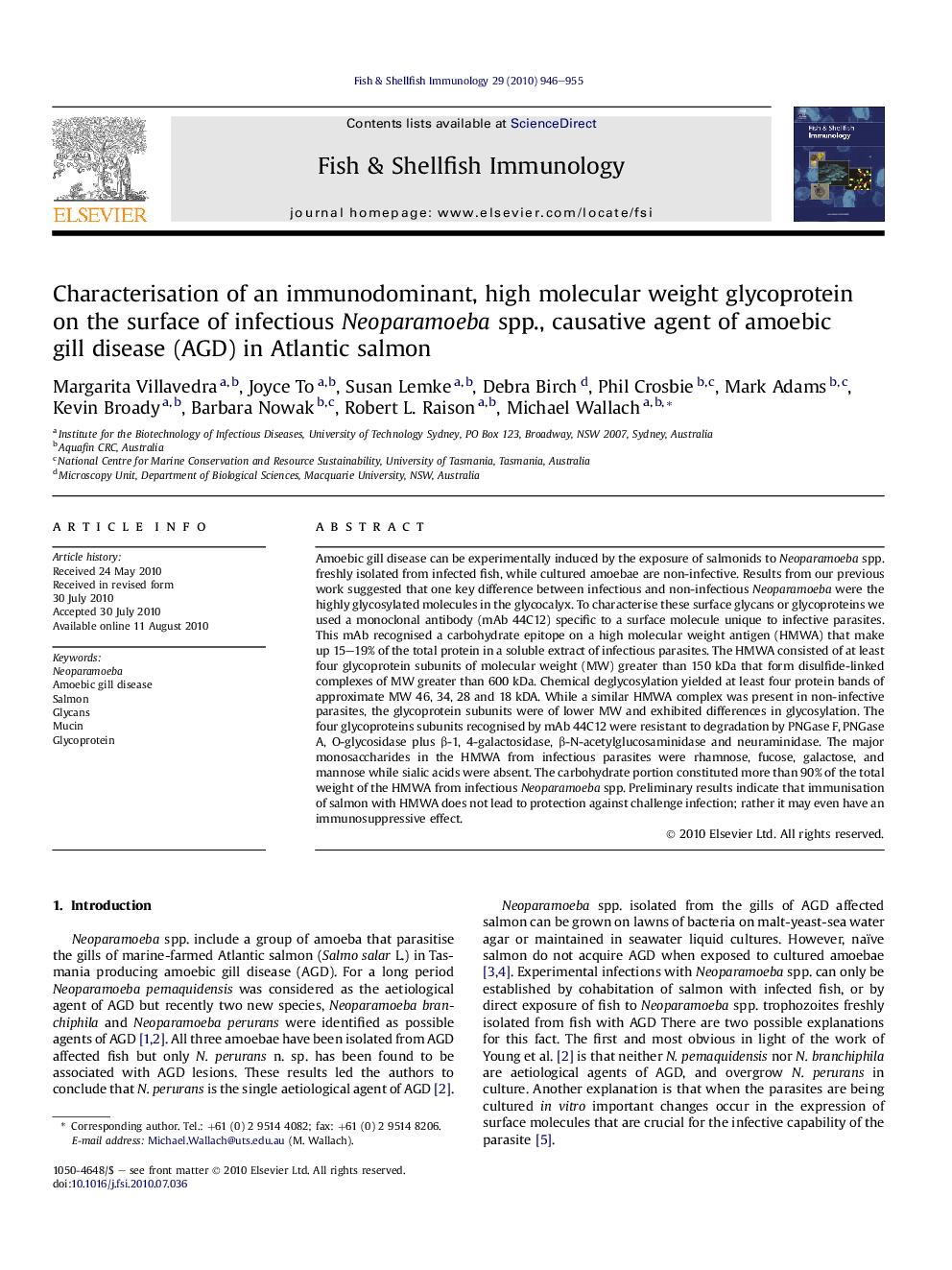| کد مقاله | کد نشریه | سال انتشار | مقاله انگلیسی | نسخه تمام متن |
|---|---|---|---|---|
| 2432519 | 1106797 | 2010 | 10 صفحه PDF | دانلود رایگان |

Amoebic gill disease can be experimentally induced by the exposure of salmonids to Neoparamoeba spp. freshly isolated from infected fish, while cultured amoebae are non-infective. Results from our previous work suggested that one key difference between infectious and non-infectious Neoparamoeba were the highly glycosylated molecules in the glycocalyx. To characterise these surface glycans or glycoproteins we used a monoclonal antibody (mAb 44C12) specific to a surface molecule unique to infective parasites. This mAb recognised a carbohydrate epitope on a high molecular weight antigen (HMWA) that make up 15–19% of the total protein in a soluble extract of infectious parasites. The HMWA consisted of at least four glycoprotein subunits of molecular weight (MW) greater than 150 kDa that form disulfide-linked complexes of MW greater than 600 kDa. Chemical deglycosylation yielded at least four protein bands of approximate MW 46, 34, 28 and 18 kDA. While a similar HMWA complex was present in non-infective parasites, the glycoprotein subunits were of lower MW and exhibited differences in glycosylation. The four glycoproteins subunits recognised by mAb 44C12 were resistant to degradation by PNGase F, PNGase A, O-glycosidase plus β-1, 4-galactosidase, β-N-acetylglucosaminidase and neuraminidase. The major monosaccharides in the HMWA from infectious parasites were rhamnose, fucose, galactose, and mannose while sialic acids were absent. The carbohydrate portion constituted more than 90% of the total weight of the HMWA from infectious Neoparamoeba spp. Preliminary results indicate that immunisation of salmon with HMWA does not lead to protection against challenge infection; rather it may even have an immunosuppressive effect.
Figure optionsDownload as PowerPoint slideResearch highlights
► Mab (44C12) reactive to infective parasites recognise carbohydrate epitopes.
► Epitopes are associated with 4 protein bands in HMWA (MW 46, 34, 26 & 18 kDa).
► These surface glycoproteins are resistant to enzymatic deglycosylation.
Journal: Fish & Shellfish Immunology - Volume 29, Issue 6, December 2010, Pages 946–955